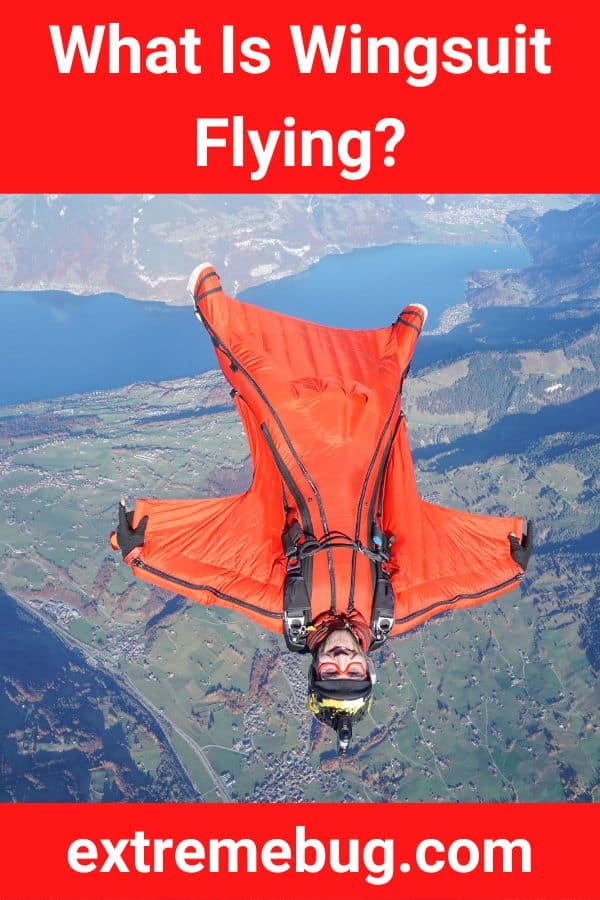The old saying used to go that if God had wanted people to fly, he would have given them wings.
And yet, we have given ourselves wings in more ways than one.
We have planes carrying us all over the globe in a matter of hours, propelled by huge engines—but we also have wingsuits for our bodies.
So what is wingsuit flying?
Wingsuit flying involves using a sleeved jumpsuit—also known as a wingsuit—to generate increased lift to extend airtime, like flying. You might jump from a plane in a wingsuit or from a base jumping spot. Wingsuit flying ends with opening a parachute, in almost all cases.
Wingsuit flying is sort of just what it sounds like, then.
You put on a special suit and you’re able to fly through the air, rather than simply freefalling.
They are incredibly difficult to master and there are, naturally, a great many associated risks.
Let’s find out more.
What does a wingsuit do?
A wingsuit, as the name implies, give you wings to fly through the air.
A wingsuit does not give you the ability to just fly from a standing position, of course.
They are employed as part of either skydives or base jumping.
It essentially works by modifying your surface area which is exposed to wind drag.
Reducing drag increases lift, and thus you are able to move further through the air, rather than just freefalling.
With a great deal of training, wingsuit pilots can perform extremely impressive glide ratios of up to 3:1, and sometimes more.
So, a wingsuit effectively gives you wings.
They aren’t wings like birds have, since you can’t flap them to lift yourself into the air.
They don’t literally allow you to fly, but they do allow you to glide to the point that you can really feel as though you are flying.
They are perhaps at their most impressive when skilled pilots use them to navigate nimbly through mountain valleys or other scenery, after a base jump.
This is obviously a lot harder and a whole lot more dangerous, but the pilot is contextualized against the ground, and thus you can get a real sense of just how fast they are moving.
When a glider travels through the air, you can obviously measure their movement, but it’s harder to see when they aren’t close to the ground.
So, in short, a wingsuit gives you a limited ability to fly, if you know how to use it.
Just how far can you fly, then?
How far can you fly with a wingsuit?
It depends a lot on the pilot and the conditions.
An experienced and well-trained pilot, in ideal conditions, can fly with a glide ratio, as I said, of 3:1 or more.
Let’s take a typical skydive as an example.
They are normally performed at around 12,000 feet.
The wingsuit pilot won’t generally release their parachute lower than 9,000 feet.
At a glide ratio of 2.5-3:1, that would mean the pilot could cover around 7 and a half kilometres of distance over the ground.
Obviously, these are the ideal conditions, and the height gives you the added distance.
When you are low to the ground, you can’t travel anything like that far.
So, it all depends and is all relative, but you can certainly travel a good distance in a wingsuit.
So, how much does it cost to try one out?
How much does it cost to fly in a wingsuit?
It’s worth mentioning that, unlike ordinary skydiving, you can’t just rock up and try out wingsuit flying.
You can’t do it in tandem, so you need extensive training and preparation in order to be able to use a wingsuit.
There are several steps to earning your wingsuit license, each with their own cost.
You’ll need to learn skydiving, too, so you can expect the high-end costs of wingsuit flying to total to around $30,000 or more.
On the lower end, it could be just under $20,000.
This involves your three licenses for skydiving, and a flight course.
Then you have the base-jumping course, your skydiving equipment, and a variety of other costs associated.
So, in short, it’s not cheap, and it’s going to take a long time before you can actually do it.
It’s not something to be undertaken lightly!
With that in mind, I’m sure you are wondering how common fatalities are.
How common are wingsuit deaths?
Naturally, wingsuit flying involves a lot of risk.
Things can go wrong even for the most experienced pilot.
The actual numbers of deaths are relatively low, with about 400 people having died since 1981, when the practice first began.
But as a proportion of total wingsuit jumps, this figure is quite a lot more concerning.
Around 1 in every 500 wingsuit jumps end in death.
This might seem low, but compared with typical skydiving, which is only 1 death in around 100,000 jumps, you can see the difference.
With every safety measure taken and a responsible, experienced pilot, the risk of death is mitigated hugely—but it is always there.
There’s no denying the danger of a wingsuit flight, then.
You have to take seriously these risks, and most long-term wingsuit flyers will usually suffer some kind of injury or another.
But it’s also so popular because it is an experience like no other, something which human beings have dreamed of since the dawn of time.
So, the appeal is easy to understand.







